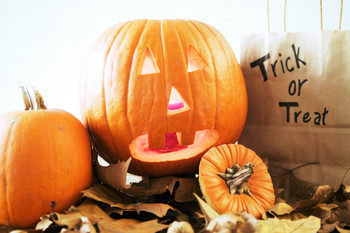All Hallow’s Eve is the night before All Saints Day. All Hallow’s Eve eventually became known as “Halloween”. It was believed that the dead rose from their graves on All Hallows Eve and roamed the Earth looking for revenge or souls to steal. That’s why people originally dressed in costumes – not as Disney princesses, Hobos or Superheroes etc., but rather as witches or ghouls or ghosts – so they could blend in with the roaming spirits and escape this awful night unharmed, unpossessed and unclaimed for a place in Hell.
This belief in the dead being able to rise goes back to the time of Neanderthals. Archaeologists have unearthed Neanderthal graves and found that often the head was severed and buried separately from the body. Archaeologists theorize this was to incapacitate the dead person’s ability to navigate when they rose from the dead, allowing the living the time and space to escape.
Ancient Mesopotamians left records indicating that they were sure that disease, natural disasters, deformity, mental illness etc. were the result of shenanigans of the departed engaged in the tormenting of the living. Ancestor worship began as a way to appease these dead spirits to keep them away from those still full of life. Trick or treating sprung from this practice. Food and trinkets were left on the approach to an ancient home on All Hallow’s Eve to appease those spirits wandering on that haunted night. This custom, begun out of concern over supernatural malevolence, morphed over time into the innocent begging of children for candy on Halloween.
The concept of “zombies” can be traced to the earliest Japanese myths and legends. One such tale comes to us from Japanese literature with the story of Izanagi and Izanami. They were quite happily married until the day that Izanami died. Izanagi was quite lonely and despondent. He loved his wife Izanami and missed her, so he made a deal with the Devil (Yomi) the keeper of the gates to eternal darkness. Yomi agreed to let Izanagi retrieve Izanami from Hell provided he did not look at her until she was topside. On his way out with Izanami, he stumbled and had to strike a light to see his way. This flame illuminated Izanami and revealed her to be a living, rotting corpse. Needless to say, Izanagi ran for the hills and the myth of the zombie was born. The zombie legend is found in other cultures around the world as well, for example in the Caribbean. In Haiti, with the practice of voodoo, a zombie is created with the aid of a “bocor”, a kind of witch doctor. The zombie is created by the bocor walking into a living victim’s house backwards and sucking the person’s soul out of the door and placing it in a bottle. Once the bottle is sealed, the victim begins to waste away and eventually dies. If the bocor casts a spell to return the soul to the lifeless body and then calls the victim’s name – the bocor can make the zombie rise and walk the Earth. A zombie must be fed. However, if a zombie tastes salt it “remembers” that it is dead and will return to the grave.
The practice of using coffins to bury the dead was first recorded in Sumer in the third millennium B.C.E. The contemporary funeral lunch served after many funeral services has an ancient, and preventative, purpose as well. There is an old Welsh custom where people would eat their funeral meal over the corpse. The idea was to “eat” the sins of the dead loved one in order to ease their entry into Heaven. In Germany, leichennudeln (corpse cakes) were placed on the dead body before they were baked. This was supposed to absorb the sins and abilities of the departed. When the cakes were eaten the abilities of the person who passed on would be assumed by the living and also the deceased’s sins would be consumed thus allowing them to pass blameless into the afterlife.
In Australia, the aborigines believe in the power to curse someone to death by “bone pointing”. A person takes a kangaroo bone, carves a point at one end and drills a hole in the other. A strand of the victim’s hair is threaded through the hole and when the bone is pointed at the victim, they get sick and die – a concept similar to the one that leads to the creation of zombies. The Australian parliament actually considered legislation to outlaw this practice and some even suggested it be classified as a type of murder, because this belief was so strong and prevalent amongst the indigenous population. The proposed legislation was never codified, however.
In the modern world, Halloween can include pranks, vandalism and outright criminal behavior. For the most part, today’s Halloween is a revered childhood holiday filled with treats, wild costumes, parties and sometimes throw backs from Halloweens past, like apple bobbing. Ghost stories, scary movies and older siblings lying to younger siblings about a multitude of things have taken the place of the terror that ancient peoples experienced while trying to stay alive and avoid the evil spirits of old.
By the way, black cats were to be avoided because they were the companions of demons out to steal good Christian souls. When one saw a black cat, you knew a demon was not far behind. Black cats are still dangerous on Halloween night, that’s because you could trip over one and fall in the dark.
I hope you have a safe and enjoyable Halloween!


